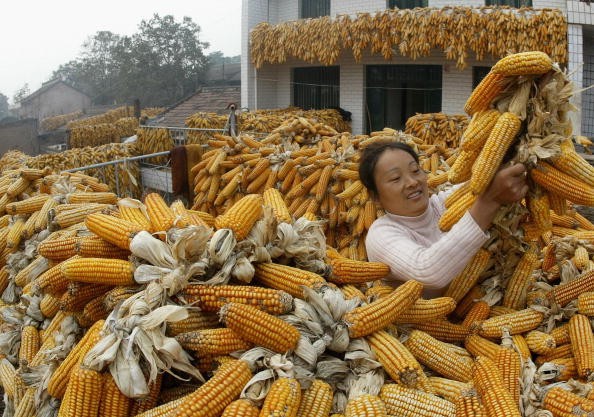China will be cutting down on imports of corn and feed grains as Beijing increases the amount auctioned from state reserves and domestic prices dropping to a decade low, according to analysts.
The Chinese government is offering an estimated 7.9 million tons of corn from its stockpiles for the third week, according to a report from industry news portal AGWeb on Wednesday. The government previously auctioned off 6 million tons on July 21-22 and around 2 million tons on July 12-13 which included poor quality grain.
China, which is the world's second-biggest corn consumer, saw its corn futures tumble to a decade low last week amid increasing sales from state reserves. Almost 13 million tons has been sold since auctions began in late May, according to data from the National Grain Trade Center.
Corn imports are expected to slump 69 percent in the year starting October and purchases of alternative feeds barley and sorghum will also drop, according to the China National Grain and Oils Information Center (CNGOIC).
"Imports of corn substitutes have become almost impossible," said Feng Lichen, chief analyst at Chicorn, a private consulting firm. "Domestic futures prices have already fallen below prices for imported barley and sorghum."
Corn for January delivery, following China's harvest, dropped to 1,438 yuan a ton in August on the Commodity Exchange, the lowest for the most-active contract since 2006, according to AGWeb. Futures were at 1,453 yuan on Wednesday, a 12-percent discount to the September delivery contract. The price of U.S. sorghum shipped to China including taxes was at 1,689.12 yuan a ton as of Tuesday, while Australian barley was at 1,545.06 yuan a ton.
China's sorghum imports also fell 45 percent in June from a year earlier and barley purchases dropped 51 percent, according to official customs data. Inbound corn shipments also dropped sharply by 92 percent in the period, according to data from AGWeb.
Buyers are also expected to cut imports of U.S. distiller's dried grains with solubles amid speculations that China may introduce anti-dumping tariffs in one or two months, said Shi Wei, an analyst at Shanghai JC Intelligence Co.
China's commerce ministry is also foreseen to announce a decision in September and impose a sanction, commodities information firm S&P Global Platts reported earlier in August citing an insider source.
Beijing is expected to sell around 40 million tons of corn in 2016, including 20 million tons sold directly to the market earlier this year, said Feng.
According to JCI data, China has about 200 million tons of reserves, which is double the amount estimated by the U.S. Department of Agriculture.
China is experiencing a corn surplus after the government began subsidizing output in 2008, acquiring grain at above-market prices to protect farmer's incomes. This stockpiling system is now being wound down and being replaced with other subsidies to make it more market-based.
The government has also reduced the area planted to corn, the first time in a decade, although China's 2016-17 corn harvest is still set to exceed annual consumption, CNGOIC estimated.
"Enterprises are very cautious in building stocks as they expect a further drop in prices," said Zhang Zhixian, senior researcher at Cngrain.com, a state-affiliated research firm. "If farmers are having problems selling their harvests, local governments may have to stockpile this year."



























